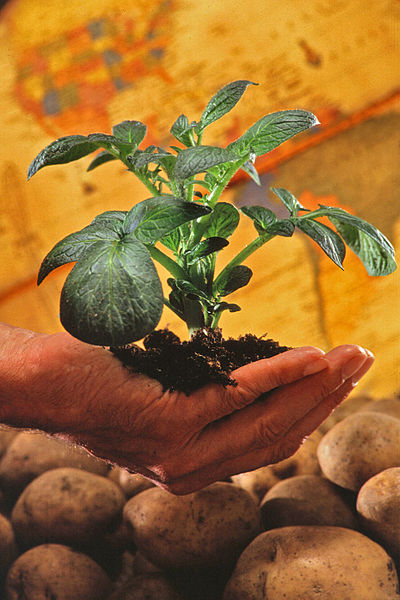Did you know that the first people to identify the climate swing we now know of as ENSO or El Nino Southern Oscillation were potato farmers in Peru? They noticed that in some years very wet conditions occurred and caused problems with growing potatoes there due to the wet conditions, and other years were very dry and caused local potato famines due to the lack of rainfall. Now we know that the wet years were El Nino years when warm water off the coast of Peru and Ecuador cause the development of thunderstorms that drop rain on the land nearby. Dry years were La Nina years, when the warm water moved west away from the coast and so no thunderstorms occurred, leading to drought.
Now, with the atmosphere getting warmer and more humid, moist conditions are leading to more fungal diseases in the potato fields. This BBC article describes how scientists are using genes from wild varieties of potatoes and other crops to improve resistance to the new climate stresses by using gene editing to eliminate unfavorable characteristics of the cultivated varieties and add disease resistance to the new plants. You can read more about how this differs from genetic modification by speeding up the process of traditional cross-breeding. Thanks to my friend Bob Kemerait for posting the article on Facebook!
